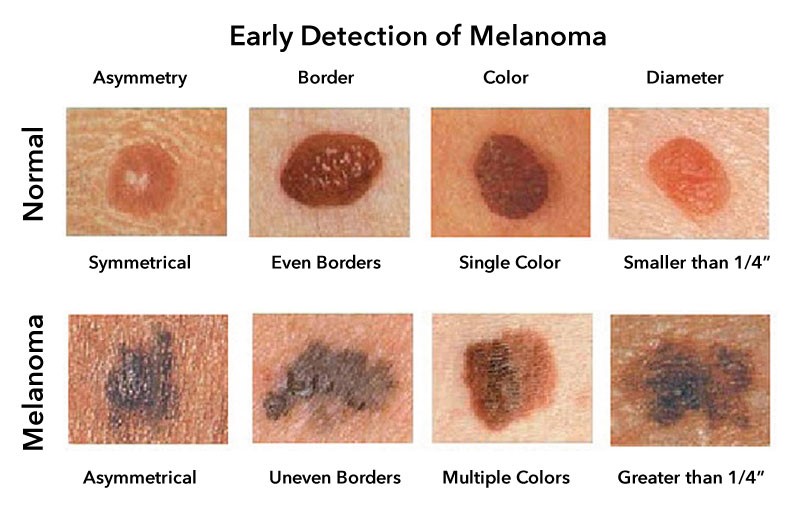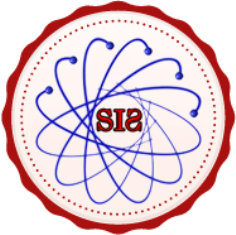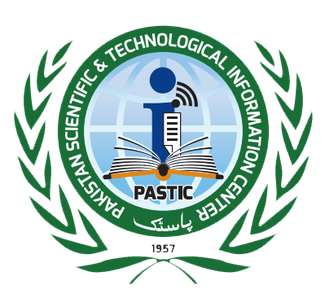Enhancing Skin Cancer Detection: A Study on Feature Selection Methods for Image Classification
Keywords:
Skin Cancer, Image processing, Convolutional Neural Network, ABCD techniqueAbstract
Visually comparable images can be easily recognized by the human eye, but specialist knowledge is needed to correctly describe medical images, such as those showing skin afflicted by cancer. As skin cancer is becoming more commonplace worldwide, there is a growing need for qualified specialists to help with its diagnosis. Several intricate genetic abnormalities lead to cancer, one of the most serious illnesses. Skin cancer is the most frequently diagnosed type of cancer. The present research examines two main methods: segmentation and feature extraction, since early identification is essential to enhancing treatment results. Our research focuses on identifying malignant melanoma, which is caused by an overabundance of melanocytes in the dermis layer of the skin. We used the well-known dermatological approach known as asymmetry, border, color, and differential (ABCD) dermoscopy to aid in early identification. Asymmetry (differences in shape and structure), border irregularity (uneven or jagged borders), color variation (differing pigmentation inside the lesion), and differential structure (development in size and appearance over time) are the criteria used in this technique to analyze skin lesions. CNN-based deep learning models are used for image pre-processing, segmentation, feature extraction, and classification in the organized process of the suggested framework. Additionally, sophisticated digital image processing methods like size estimates, color identification, border analysis, and symmetry detection are included. By using CNNs to collect texture-based information, feature extraction is improved and skin lesions can be precisely categorized. We suggest using a Backpropagation Neural Network (BPNN) to increase classification accuracy and make efficient decisions when distinguishing between benign and malignant skin diseases. To overcome this difficulty, machine learning classifiers have surfaced as a viable way to automate the classification of images for skin cancer. In this paper, deep convolutional neural networks (CNNs) are used to construct a predictive model for skin cancer diagnosis. Using the HAM10000 dataset, the suggested method produced a 92% accuracy rate.
References
R. Raja Subramanian, D. Achuth, P. Shiridi Kumar, K. N. kumar Reddy, S. Amara, and A. S. Chowdary, “Skin cancer classification using Convolutional neural networks,” Proc. Conflu. 2021 11th Int. Conf. Cloud Comput. Data Sci. Eng., pp. 13–19, Jan. 2021, doi: 10.1109/CONFLUENCE51648.2021.9377155.
A. Z. Mohammed Rakeibul Hasan, Mohammed Ishraaf Fatemi, Mohammad Monirujjaman Khan, Manjit Kaur, “Comparative Analysis of Skin Cancer (Benign vs. Malignant) Detection Using Convolutional Neural Networks,” J. Healthc. Eng., 2021, doi: https://doi.org/10.1155/2021/5895156.
H. S. Sara Medhat , Hala Abdel-Galil , Amal Elsayed Aboutabl, “Skin cancer diagnosis using convolutional neural networks for smartphone images: A comparative study,” J. Radiat. Res. Appl. Sci., vol. 15, no. 1, pp. 262–267, 2022, doi: https://doi.org/10.1016/j.jrras.2022.03.008.
C. A. & R. A. Jaisakthi S M, Mirunalini P, “Classification of skin cancer from dermoscopic images using deep neural network architectures,” Multimed. Tools Appl., vol. 82, pp. 15763–15778, 2023, doi: https://doi.org/10.1007/s11042-022-13847-3.
N. B. Z. Mohsin Mubeen Abbasi, Syed Muhammad Daniyal, Abdul Ahad Abro, Dilbar Hussain, Usama Amjad, “Applying Neural Networks to Predict Ventilator Demand: A Study of Pakistan’s Healthcare Sector,” VFAST Trans. Softw. Eng., vol. 12, no. 3, pp. 217–229, 2024, doi: https://doi.org/10.21015/vtse.v12i3.1915.
D. C. Malo, M. M. Rahman, J. Mahbub, and M. M. Khan, “Skin Cancer Detection using Convolutional Neural Network,” 2022 IEEE 12th Annu. Comput. Commun. Work. Conf. CCWC 2022, pp. 169–176, 2022, doi: 10.1109/CCWC54503.2022.9720751.
M. S. Muhammad Asad Arshed , Shahzad Mumtaz, Muhammad Ibrahim, Saeed Ahmed, Muhammad Tahir, “Multi-Class Skin Cancer Classification Using Vision Transformer Networks and Convolutional Neural Network-Based Pre-Trained Models,” Information, vol. 14, no. 7, p. 415, 2023, doi: https://doi.org/10.3390/info14070415.
K. Thurnhofer-Hemsi and E. Domínguez, “A Convolutional Neural Network Framework for Accurate Skin Cancer Detection,” Neural Process. Lett., vol. 53, no. 5, pp. 3073–3093, Oct. 2021, doi: 10.1007/S11063-020-10364-Y/METRICS.
S. H. A. Syed Muhammad Daniyal, Atiya Masood, Mansoor Ebrahim, “An Improved Face Recognition Method Based on Convolutional Neural Network,” J. Indep. Stud. Res. Comput., vol. 22, no. 1, pp. 103–110, 2024, doi: 10.31645/JISRC.24.22.1.10.
A. K. S. S. T. G. A. N. G. A. K. P. Chakrabarti, “Dermatologist-Level Classification of Skin Cancer Using Cascaded Ensembling of Convolutional Neural Network and Handcrafted Features Based Deep Neural Network,” IEEE Access, vol. 10, pp. 17920–17932, 2022, doi: 10.1109/ACCESS.2022.3149824.
V. R. Allugunti, “A machine learning model for skin disease classification using convolution neural network,” Int. J. Comput. Program. Database Manag., vol. 3, no. 1, 2022, [Online]. Available: https://www.computersciencejournals.com/ijcpdm/archives/2022.v3.i1.B.53
S. Rajarajeswari, J. Prassanna, M. Abdul Quadir, J. Christy Jackson, S. Sharma, and B. Rajesh, “Skin Cancer Detection using Deep Learning,” Res. J. Pharm. Technol., vol. 15, no. 10, pp. 4519–4525, Oct. 2022, doi: 10.52711/0974-360X.2022.00758.
M. M. Mijwil, “Skin cancer disease images classification using deep learning solutions,” Multimed. Tools Appl., vol. 80, no. 17, pp. 26255–26271, Jul. 2021, doi: 10.1007/S11042-021-10952-7/METRICS.
R. Zhang, “Melanoma Detection Using Convolutional Neural Network,” 2021 IEEE Int. Conf. Consum. Electron. Comput. Eng. ICCECE 2021, pp. 75–78, Jan. 2021, doi: 10.1109/ICCECE51280.2021.9342142.
D. A. G. L. Dr. S. RANGA SWAMY, Dr. C. SRINIVASA KUMAR, “AN EFFICIENT SKIN CANCER PROGNOSIS STRATEGY USING DEEP LEARNING TECHNIQUES,” INDIAN J. Comput. Sci. Eng., vol. 12, no. 1, 2021, doi: 10.21817/indjcse/2021/v12i1/211201180.
M. N. Syed Muhammad Daniyal, Mohsin Mubeen Abbasi, Dilbar Hussain, Usama Amjad, Abdul Basit Abro, “A Hybrid Approach for Simultaneous Effective Automobile Navigation with DE and PSO,” VAWKUM Trans. Comput. Sci., vol. 12, no. 2, 2024, doi: https://doi.org/10.21015/vtcs.v12i2.1914.
M. K. Islam et al., “Melanoma Skin Lesions Classification using Deep Convolutional Neural Network with Transfer Learning,” 2021 1st Int. Conf. Artif. Intell. Data Anal. CAIDA 2021, pp. 48–53, Apr. 2021, doi: 10.1109/CAIDA51941.2021.9425117.
S. Z. Yinhao Wu, Bin Chen, An Zeng, Dan Pan, Ruixuan Wang, “Skin Cancer Classification With Deep Learning: A Systematic Review,” Front. Oncol., 2022, [Online]. Available: https://www.frontiersin.org/journals/oncology/articles/10.3389/fonc.2022.893972/full
Krishna Mridha; Md. Mezbah Uddin; Jungpil Shin; Susan Khadka; M. F. Mridha, “An Interpretable Skin Cancer Classification Using Optimized Convolutional Neural Network for a Smart Healthcare System,” IEEE Access, vol. 11, pp. 41003–41018, 2023, doi: 10.1109/ACCESS.2023.3269694.
“A hybrid deep learning model for precise epilepsy detection and seizure prediction - Google Search.” Accessed: Jan. 30, 2025. [Online]. Available: https://www.google.com/search?q=A+hybrid+deep+learning+model+for+precise+epilepsy+detection+and+seizure+prediction&oq=A+hybrid+deep+learning+model+for+precise+epilepsy+detection+and+seizure+prediction&gs_lcrp=EgZjaHJvbWUyBggAEEUYOTIHCAEQIRiPAtIBBzU3NWowajeoAgiwAgE&sourceid=chrome&ie=UTF-8
A. A. Malibari et al., “Optimal deep neural network-driven computer aided diagnosis model for skin cancer,” Comput. Electr. Eng., vol. 103, p. 108318, Oct. 2022, doi: 10.1016/J.COMPELECENG.2022.108318.
J. V. Tembhurne, N. Hebbar, H. Y. Patil, and T. Diwan, “Skin cancer detection using ensemble of machine learning and deep learning techniques,” Multimed. Tools Appl., vol. 82, no. 18, pp. 27501–27524, Jul. 2023, doi: 10.1007/S11042-023-14697-3/METRICS.
W. B. Y. S. M. U. T. A. A. A. S. A. S. M. D. N. Ahmad, “Novel Prognostic Methods for System Degradation Using LSTM,” IEEE Access, vol. 12, pp. 191955–191966, 2024, doi: 10.1109/ACCESS.2024.3517705.
F. R. & M. U. G. Qaiser Abbas, “Acral melanoma detection using dermoscopic images and convolutional neural networks,” Vis. Comput. Ind. Biomed. Art, vol. 4, no. 21, 2021, doi: https://doi.org/10.1186/s42492-021-00091-z.
R. Mohakud and R. Dash, “Designing a grey wolf optimization based hyper-parameter optimized convolutional neural network classifier for skin cancer detection,” J. King Saud Univ. - Comput. Inf. Sci., vol. 34, no. 8, pp. 6280–6291, 2022, doi: https://doi.org/10.1016/j.jksuci.2021.05.012.
A. K. K. Nikita Kashyap, “Enhanced Skin Disease Detection and Classification System Using Deep Learning Technique,” Int. J. Adv. Technol. Soc. Sci., vol. 2, no. 1, pp. 93–104, 2024, doi: https://doi.org/10.59890/ijatss.v2i1.1292.
M. M. Shukla, B. K. Tripathi, T. Dwivedi, A. Tripathi, and B. K. Chaurasia, “A hybrid CNN with transfer learning for skin cancer disease detection,” Med. Biol. Eng. Comput., vol. 62, no. 10, pp. 3057–3071, Oct. 2024, doi: 10.1007/S11517-024-03115-X/METRICS.
J. E. Leong and C. P. Goh, “Identification of Skin Conditions with Convolutional Neural Networks: A Deep Learning Approach,” ICDXA 2024 - Conf. Proc. 2024 3rd Int. Conf. Digit. Transform. Appl., pp. 205–209, 2024, doi: 10.1109/ICDXA61007.2024.10470649.
M. S. K. Sreedhar Burada, B.E. Manjunathswamy, “Early detection of melanoma skin cancer: A hybrid approach using fuzzy C-means clustering and differential evolution-based convolutional neural network,” Meas. Sensors, vol. 33, p. 101168, 2024, doi: https://doi.org/10.1016/j.measen.2024.101168.

Downloads
Published
How to Cite
Issue
Section
License
Copyright (c) 2025 50sea

This work is licensed under a Creative Commons Attribution 4.0 International License.




















